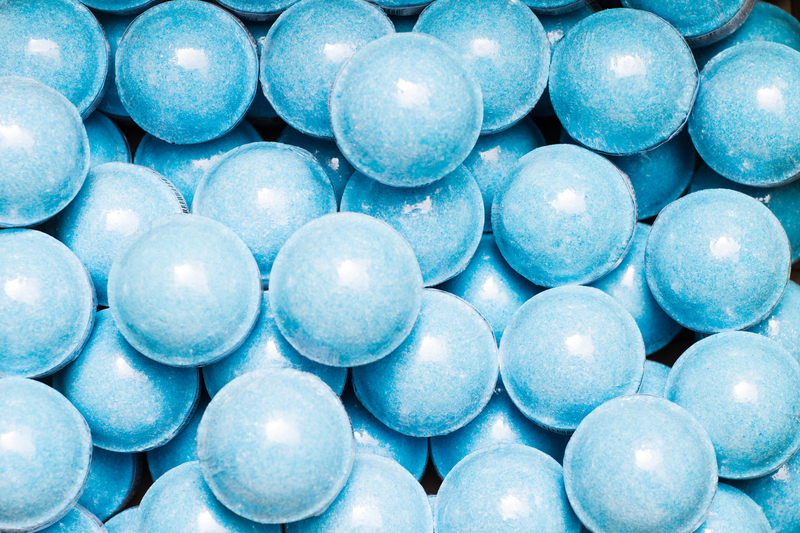Effective DIY Tips for Cleaning Stubborn Burnt Stovetop Residue
Posted on 21/09/2025
Effective DIY Tips for Cleaning Stubborn Burnt Stovetop Residue
Few household chores are as daunting as tackling a messy, burnt stovetop. Whether you're an avid home cook or simply tolerate quick weeknight meals, stubborn stove top residue seems inevitable. Grease splatters, burnt-on spills, and hardened food bits can accumulate rapidly, leaving hob surfaces unsightly and challenging to clean. But fear not--with the right methods and some elbow grease, you can restore your stovetop's shine without resorting to harsh chemicals or expensive products. This comprehensive guide offers a wealth of DIY cleaning tips for removing stubborn residue from your stovetop, ensuring your kitchen looks sparkling fresh after every meal.
Why Is Burnt Stovetop Residue So Difficult to Remove?
Burnt-on residue forms when food, sauces, and oils spill over and cook directly onto the hot surface. Over time, these residues carbonize and bond to your stovetop, especially if left untreated. This stubborn layer not only looks unappealing but can also affect the efficiency of burners and even pose safety hazards if not properly cleaned.

Understanding Your Stovetop Material
Before diving into DIY stovetop cleaning techniques, it's important to know what kind of hob you have. Each material requires tailored care to avoid scratches or damage:
- Gas stovetops: Usually feature removable burner grates and drip pans, often coated with enamel or made of cast iron.
- Electric coil stovetops: Feature metal coils and drip pans below.
- Glass or ceramic stovetops: Sleek surfaces require gentler cleaning agents and tools to avoid scratching.
Essential Tools and Supplies for DIY Stovetop Cleaning
Having the right cleaning essentials will make removing burnt stovetop grime much more effective. Here's a list of basic and easily accessible tools you'll need:
- Baking soda - a natural abrasive for gently scrubbing residues
- White vinegar - an effective degreaser and stain remover
- Lemon juice - for a natural, fresh-smelling acid cleaner
- Dish detergent - helps to cut through grease
- Scouring pads or non-abrasive sponges
- Plastic or silicone spatula
- Old toothbrush
- Microfiber cloths or soft kitchen towels
- Spray bottle
- Warm water
- Paper towels
- Optional: Razor blade scraper (for glass stovetops only, with caution!)
Step-by-Step DIY Cleaning Methods for Stubborn Burnt Stovetop Residue
The following methods cover a variety of homemade and natural cleaning techniques for burnt stovetop residue, ensuring safety and effectiveness. With these time-tested tips, you'll bring your stove back to its original shine.
Method 1: Baking Soda and Vinegar Paste
- Remove removable parts: Take off burner grates, knobs, and drip pans (if possible). Wash these separately in hot, soapy water.
- Sprinkle baking soda: Generously cover burnt areas with baking soda. Its gentle abrasive action helps break down carbonized foods without scratching.
- Spray vinegar: Fill a spray bottle with white vinegar and spritz it onto the baking soda. The mixture will fizz, helping to lift residue.
- Let it sit: For really stubborn spots, let the mixture sit for 15-20 minutes.
- Scrub: Use a non-abrasive sponge or old toothbrush to scrub. Circular motions help dislodge tough, burnt bits.
- Wipe with a damp cloth: Remove any remnants and repeat if needed.
This classic DIY stovetop cleaning recipe is safe for most surfaces, including glass or ceramic tops.
Method 2: Steam Cleaning with Hot Towels
Steam is a gentle and effective way to soften stubborn residue, especially for glass and ceramic stovetops.
- Soak towel: Heat water and soak a kitchen towel or microfiber cloth in it.
- Lay the towel: Place the hot, damp towel over the burnt stains and let it sit for 15-20 minutes. The steam will soften the gunk.
- Wipe and scrub: Remove the towel, and use it to wipe away loosened residue. Use a plastic spatula if needed for stubborn spots.
Be cautious--ensure the stovetop is cool to the touch before using this method to avoid burns.
Method 3: Lemon Juice and Baking Soda Scrub
- Mix a paste: Combine lemon juice with baking soda until you form a spreadable paste.
- Apply generously: Spread over burnt areas and let sit for 15 minutes.
- Scrub and wipe: Use a sponge or toothbrush to dislodge residue. Rinse with a damp, clean cloth.
The acidity of lemon juice boosts cleaning power and leaves a fresh scent--plus it's gentle on stovetop surfaces.
Method 4: Using Dish Detergent and Boiling Water
- Add detergent: Apply a few drops of dish soap directly on the burnt-on areas.
- Pour boiling water: Carefully pour a small amount of boiling water (just enough to cover stains) and let it soak for at least 10 minutes.
- Scrub: Gently scrub with a soft sponge or rag.
- Dry: Wipe with dry microfiber cloth.
Be very careful while handling boiling water to prevent burns or spills.
Method 5: Razor Blade Scraper (For Glass or Ceramic Only)
- Apply water or cleaning solution: Dampening the area helps prevent micro-scratches.
- Gently scrape: Holding the razor blade at a 45-degree angle, gently scrape the burnt residue. Use light, even strokes.
- Wipe and repeat: Wipe away debris, and repeat if necessary for complete removal.
Only use a new, clean blade, and never use this method for stainless steel or enamel stovetops!
Extra Tips for Stubborn, Burnt-on Stovetop Messes
- Act quickly: Wipe spills as soon as they happen to prevent them from burning on.
- Repeat treatments: For the toughest messes, it may take several rounds of cleaning and soaking.
- Use the right tools: Always choose non-abrasive pads and sponges to prevent surface scratching.
- Try commercial cleaners: If DIY recipes aren't enough, there are stovetop cleaners formulated for glass, ceramic, or enamel, but always follow manufacturer instructions.
- Clean removable parts in the dishwasher: Many grates and burners can be safely washed in the dishwasher for deeper cleaning.
- Never use steel wool: Steel wool or harsh abrasives will scratch most stovetop surfaces.
- Test in a small area first: Try any new cleaning solution on a small section to ensure it doesn't damage the surface.
Preventing Burnt Stovetop Residue: Maintenance Tips
Prevention is just as important as removing burnt-on grime. Here are some habits to adopt in your kitchen routine:
- Wipe down after every use: A quick wipe with a damp cloth or sponge prevents residue from becoming hard and burnt.
- Use burner liners: Disposable or reusable liners under burners catch spills and drips before they burn.
- Clean up spills immediately: Address spills while the stovetop is still warm (but safe to touch). Hardened spills are much harder to remove.
- Regular deep cleans: Make stovetop deep cleaning part of your weekly kitchen maintenance.
- Avoid overcrowding burners: Overfilling pots can lead to spillovers that burn instantly.

Frequently Asked Questions About Cleaning Burnt Stovetop Residue
Can I use oven cleaner on my stovetop?
Oven cleaners are often too harsh for stovetops, especially glass or ceramic. Instead, use baking soda, vinegar, and other gentle cleaners unless the manufacturer specifically approves the product.
My stovetop is stained even after cleaning. What can I do?
Try repeating the baking soda and vinegar paste treatment or use a stovetop-safe commercial cleaner. For persistent discoloration, consult your cooktop's manual for approved methods.
How often should I deep clean my stovetop?
Ideally, deep clean once a week and wipe down after every use--especially after cooking greasy or spill-prone dishes.
Are there surfaces I should never use vinegar or baking soda on?
Vinegar is safe for most surfaces, but avoid it on aluminum parts since it can corrode metal. Baking soda is generally safe but can scratch certain high-gloss or specialty coatings if used too aggressively.
Conclusion: Say Goodbye to Burnt Stovetop Residue
With the right DIY stovetop cleaning techniques, patience, and household staples like baking soda, vinegar, and lemon juice, even the most stubborn burnt-on residue can be eliminated. Regular maintenance not only keeps your kitchen looking its best but also prolongs the life of your stovetop--saving you time, money, and frustration.
Start incorporating these habits today and enjoy a spotless, gleaming stove after every meal!




